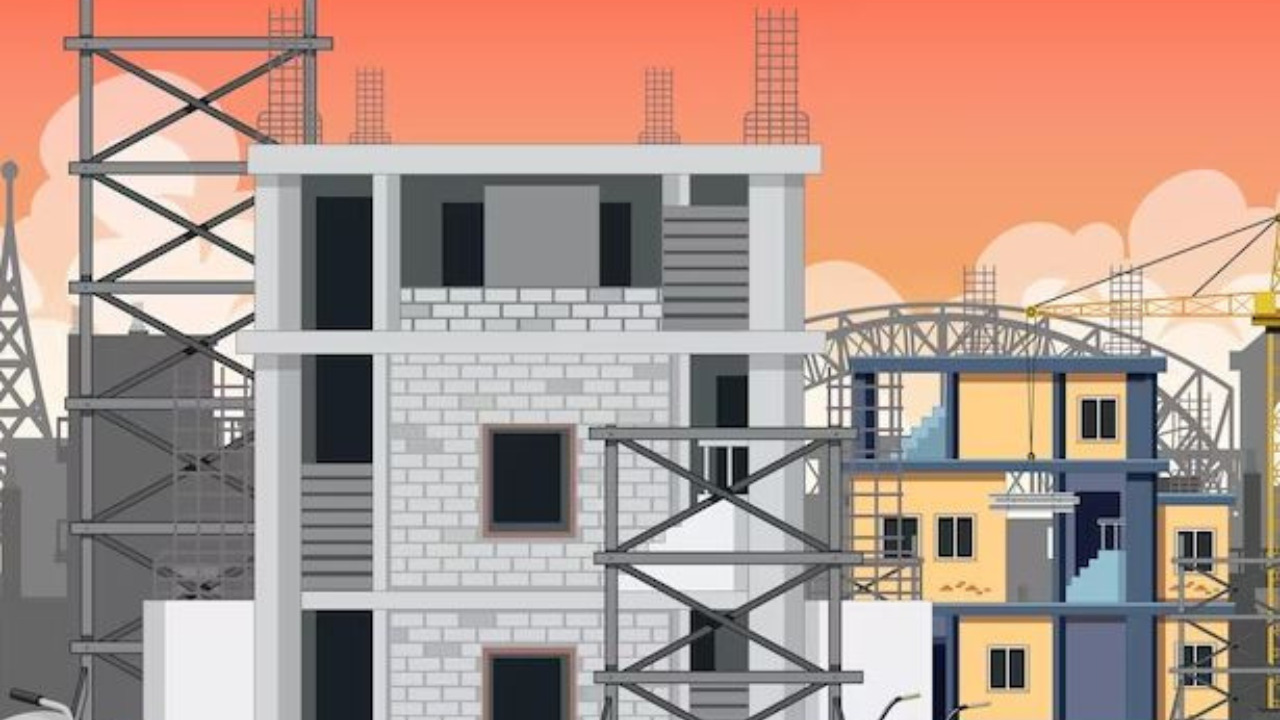Scaffolding has been a crucial part of almost every construction project since the first buildings. During construction, scaffolding is usually essential to gain access to tall buildings. Scaffolding serves many purposes, with different types of scaffolding appropriate for specific projects.
Sometimes, scaffolding can support laborers and their equipment. More frequently, though, it is used to support heavy loads made of building materials like bricks, blocks, stucco, or concrete cast in place.
There are many different types of scaffolding. However, new forms regularly come to the market. In this article, we will discuss a few of the most popular types of construction scaffolding.
Table of Contents
What is Scaffolding?
Scaffolding is a temporary structure used in construction. It is set up to hold materials and laborers while buildings or other structures are being built, repaired, or maintained.
Scaffolding provides a secure and stable platform for workers performing tasks at elevated heights, like installing, repairing, or maintaining building components.
We have compiled a list of the most common types of scaffolding. But first, let’s have a quick overview of the different types of scaffolding materials.
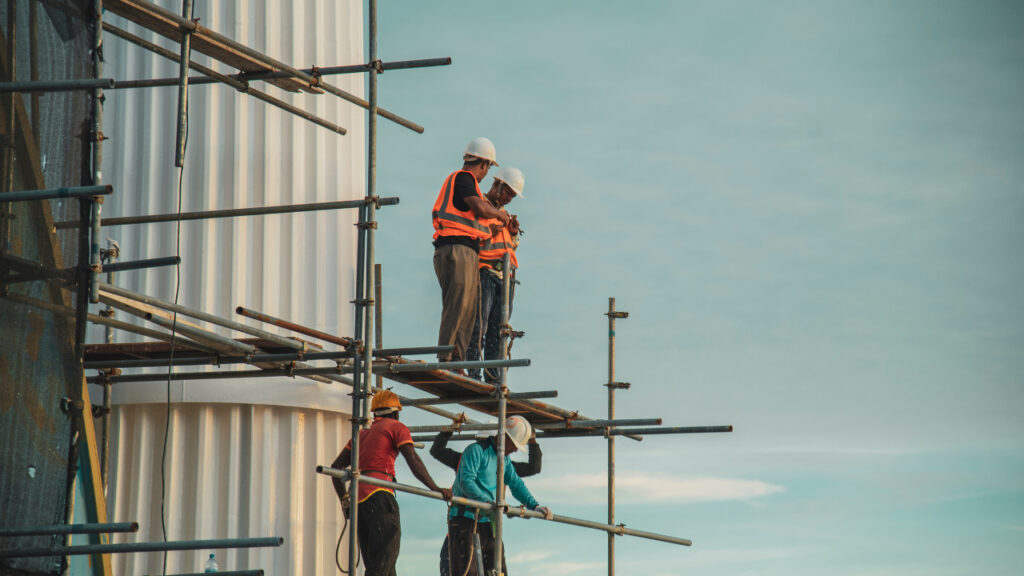
7 Different Types of Scaffolding Materials
Here’s a quick glossary of terms for scaffolding materials before we discuss the different types of scaffolding:
- Standards: the vertical parts that are in some manner fastened to the earth
- Ledgers: The horizontal supports that run parallel to the structure that the scaffolding is encircling
- Braces: The diagonal parts that stabilize and affix to ledgers and standards
- Putlogs: In single-frame scaffolding, the little pieces that join the ledger to the structure itself
- Boardings: Also called platforms, are the broad, level areas that employees walk on.
- Guardrails: The horizontal pieces that connect the standards at waist level to help prevent falls.
- Toeboards: Small, horizontal pieces of wood that run just above boardings or platforms to prevent falls
These are some of the must-have accessories for construction workers related to scaffolding.
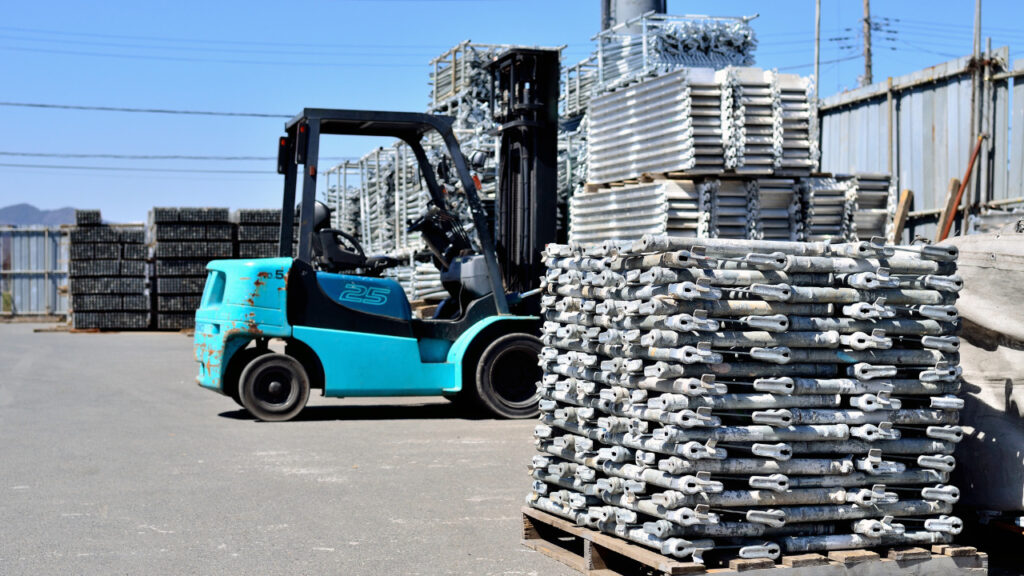
5 Key Features of Scaffolding
Here are the key features and components of scaffolding:
1. Access to Heights
Scaffolding enables laborers to go to higher ground on a building site, including the outside of buildings, bridges, and other structures.
2. Safety
It lowers the possibility of falls and injuries by offering a safe working platform. Usually, the scaffolding design includes guardrails and other safety features. Every construction worker must understand the general scaffolding safety requirements as well.
3. Support for Materials and Workers
Scaffolding also holds up the instruments and supplies required for building, in addition to supporting the workers. It includes supplies, tools, and occasionally large machinery used in construction.
4. Flexibility
Scaffolding systems are adaptable and can fit a variety of building types and sizes. This adaptability is essential for construction projects with different needs.
5. Temporary Structure
Scaffolding is a structure that is put together as needed and taken down after construction is finished. It can be moved and altered while the project is being built.
Different Types of Scaffolding in Construction
Scaffolding systems come in various forms, such as system scaffolding, frame scaffolding, tube and coupler scaffolding, and more. The type of construction, the structure’s height and arrangement, and safety requirements are some of the variables that influence the choice of scaffolding.
The types of scaffolding can be confusing for the general public, so we have mentioned all the different types of construction scaffolding in detail.
Suspended Scaffolding
Suspended scaffolding is made up of platforms that are held aloft, usually from a rooftop, by non-rigid elements like wires or ropes.
Suspended scaffolding is advised for reaching the summits of tall buildings, where the construction of supported scaffolding may be too expensive and time-consuming.
Nevertheless, weight limits are an issue, and there might be limitations on horizontal reach. Strong winds can make suspended scaffolding dangerous as a swaying platform may break the support lines.
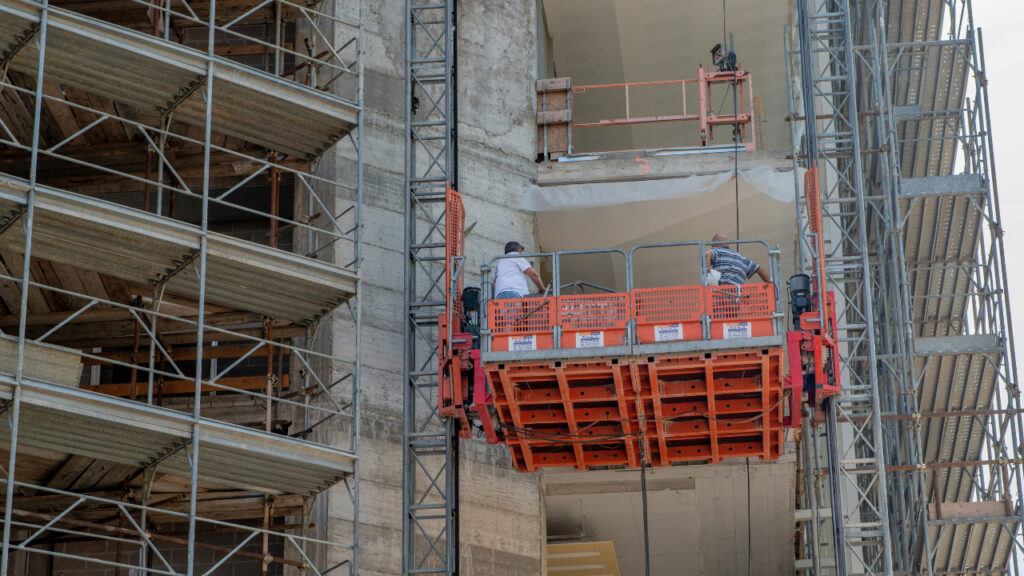
Catenary Scaffolding
Wires or ropes suspend catenary scaffolding from above. These vertical wires or ropes are connected to two horizontal ropes or wires that run parallel to the structure.
Catenary scaffolding cannot be easily moved to a new location or raised to a different height because it is immobile.
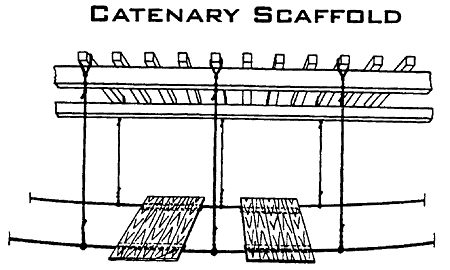
Float Scaffolding
Float scaffolding is made up of a braced platform held up by two parallel bearers and suspended from overhead supports by ropes with a fixed length.
Float scaffolding is stationary, just like catenary scaffolding. It is also called ship scaffolding.
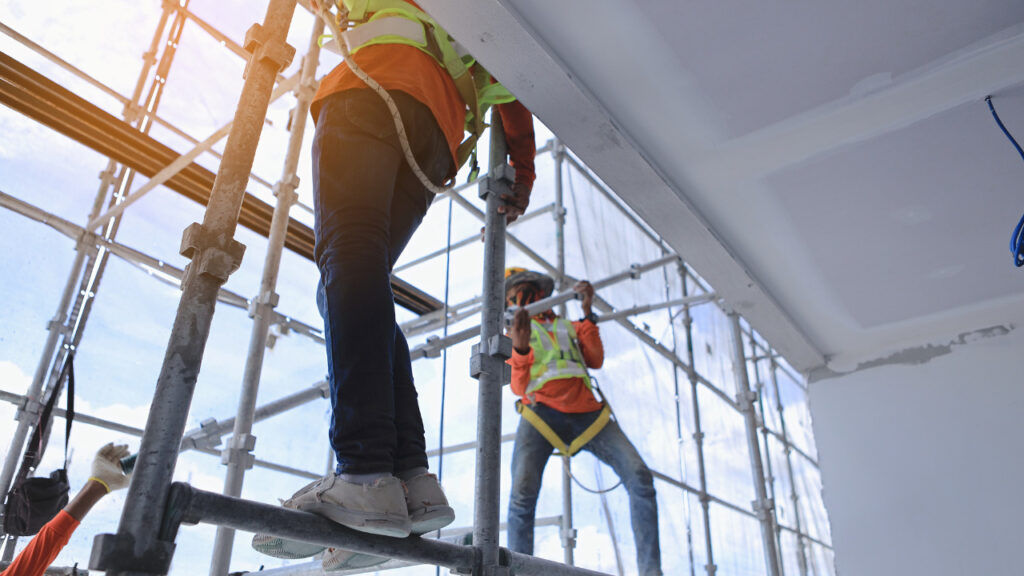
Interior Hung Scaffolding
Similar to float scaffolding, interior hung scaffolding is suspended from two parallel support beams parallel to the structure rather than from a single one.

Two-Point (Swing Stage) Scaffolding
Two-point (swing stage) scaffolding is the most popular kind of suspended scaffolding. It is made up of a platform that can be raised and lowered and is supported at both ends by wires or ropes.
The scaffolding that is typically seen hanging from the sides of skyscrapers is two-point, or swing stage, scaffolding.
Multilevel Scaffolding
It is one of the types of ladder scaffolding.
A ladder that faces perpendicular to the structure is supported by each rope or wire that suspends multi-level scaffolding from the structure. Between the two ladders is a platform that rests on the rungs.
In contrast to all other forms of suspended scaffolding, multiple platforms can rest on the ladders to create multiple layers if the ladders are long enough.

Multipoint Adjustable Scaffolding
Four ropes, typically in each platform corner, hang a platform from above in multipoint adjustable scaffolding. It is more flexible than the other forms of scaffolding because it can be raised or lowered to the desired height.
This kind of scaffolding is commonly used in stacks, tanks, silos, and chimneys because of its height-adjustable design.
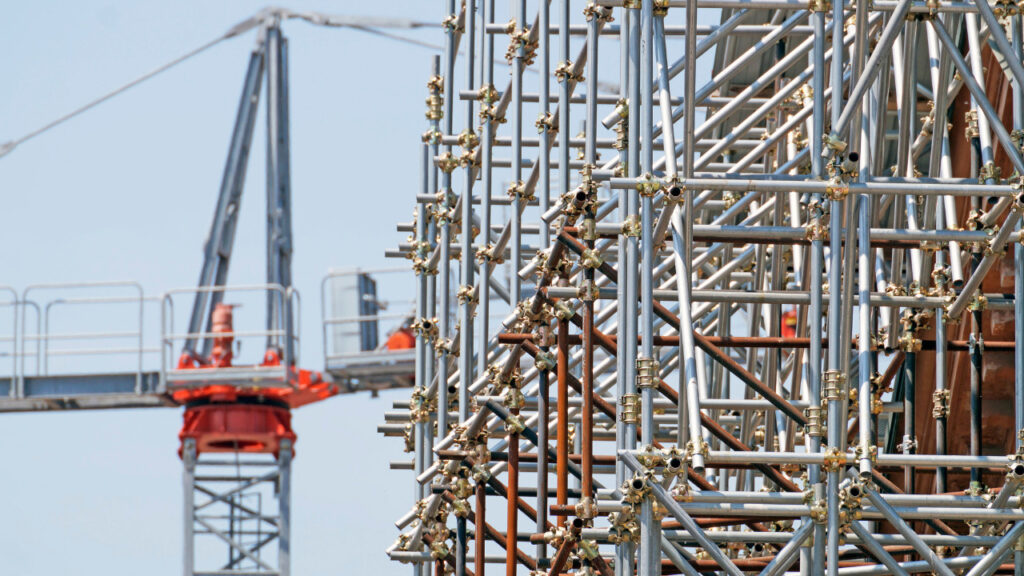
Needle Beam Scaffolding
The name “needle beam scaffolding” comes from the needle beams that are fastened, using putlogs, perpendicularly to the structure.
Ropes or wires suspended from above support the outside edges of the beams. After that, the needle beams support the platform.
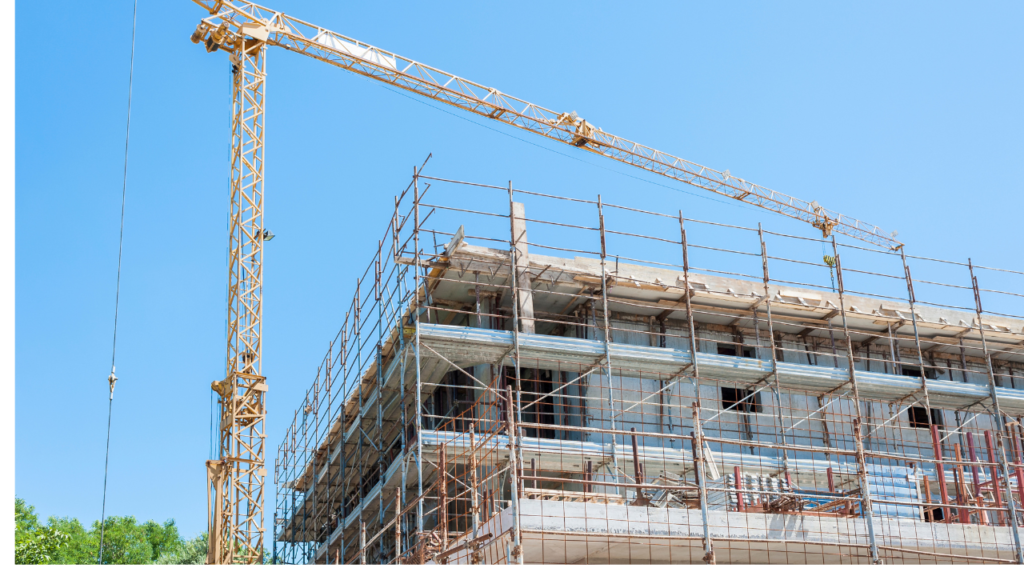
Cantilever Scaffolding
When there is insufficient space for the platforms at lower levels or the ground is too unstable to support a scaffolding structure, cantilever scaffolding is used.
Similar to needle beam scaffolding, cantilever scaffolding uses inserted needle beams that are typically anchored to the interior floor of the building.
But unlike needle beam scaffolding, which runs perpendicular to the structure, these run at an angle to support the standards, which run parallel and vertically to the structure.
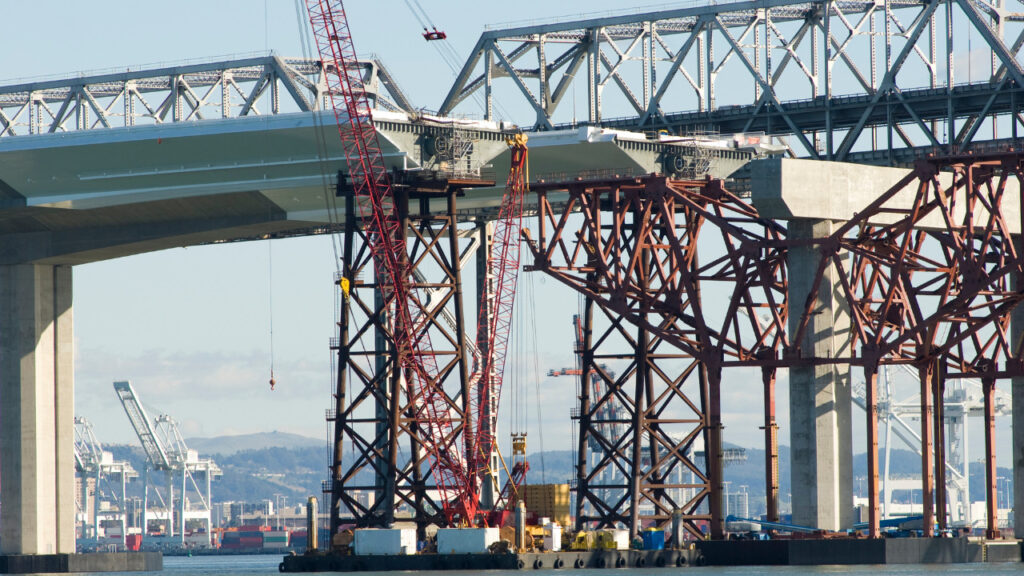
Single-point Adjustable Scaffolding
If you’ve ever seen a single window washer cleaning a skyscraper, you’ve probably seen them using single-point adjustable scaffolding.
Similar to multipoint adjustable scaffolding, but suspended by a single rope or wire rather than several, is this type of scaffolding.
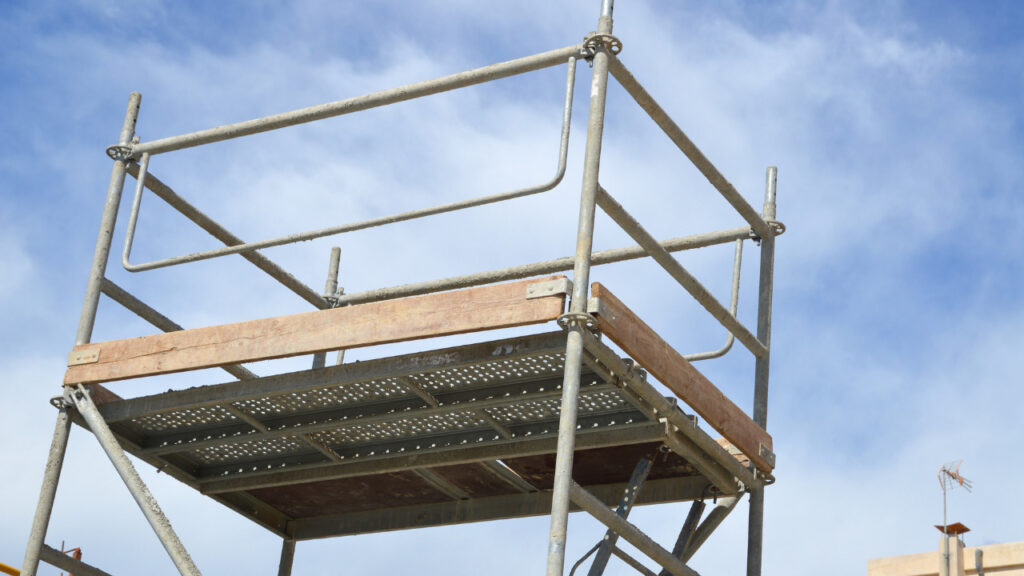
Supported Scaffolding
Supported scaffolding is made up of platforms, held up by standards secured to the ground in some manner. Stated differently, they are constructed from the ground up.
Supported scaffolding is strong, and different varieties allow you to build infinite layers.
Nevertheless, they can be difficult to use in situations where the ground is uneven or where a road restricts the footprint at the base.
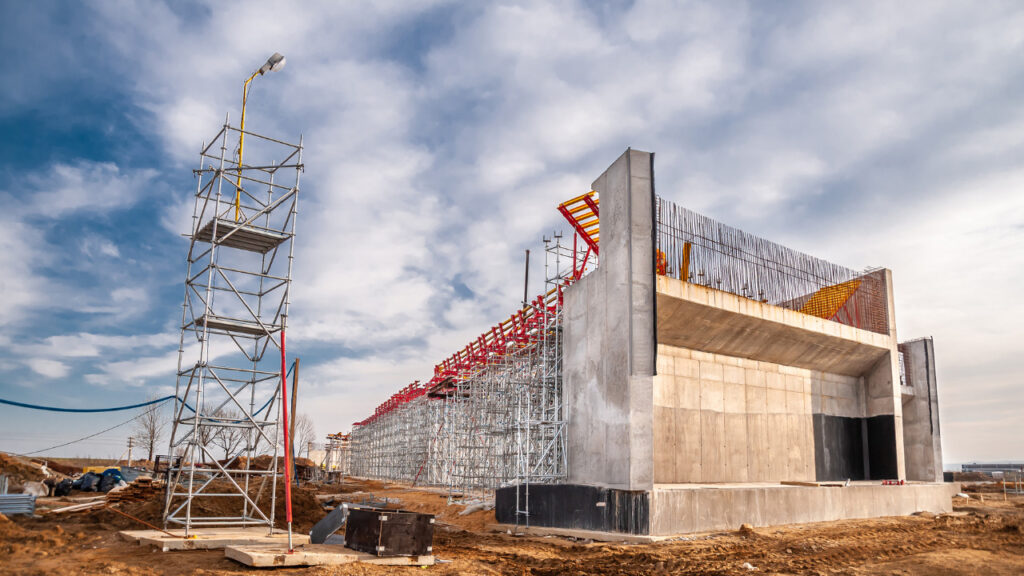
Frame Scaffolding
The most popular kind of supported scaffolding is frame scaffolding, sometimes referred to as prefabricated scaffolding, since it is the least expensive, most versatile, and simple to erect and take down.
This kind of scaffolding is constructed from the ground up using modular components. Usually built in one or two tiers, it can be challenging because the base needs to be precisely level.
Painters and residential contractors usually prefer frame scaffolding.
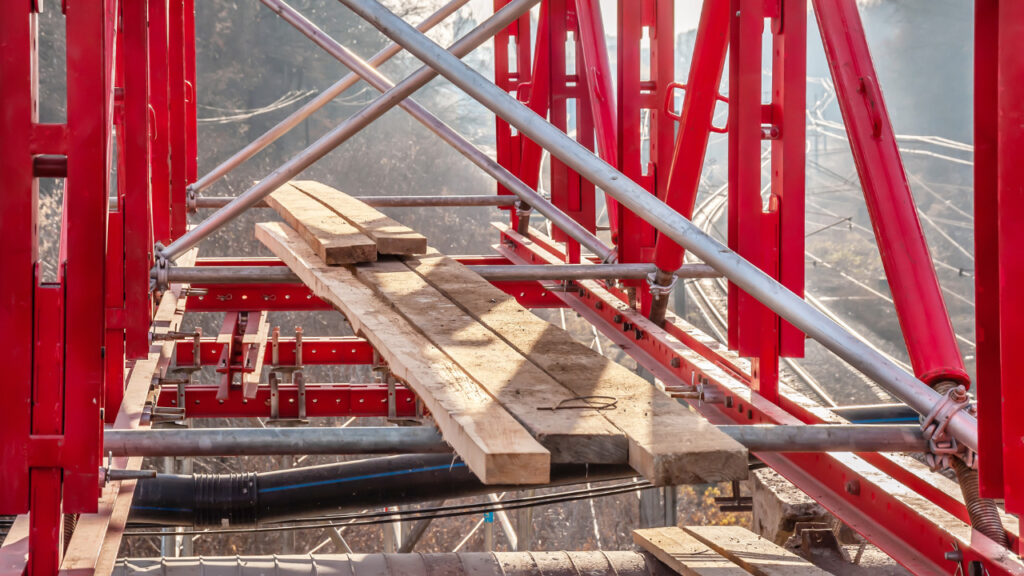
Ladder Jack Scaffolding
Ladder jack scaffolds are among the most basic types of ladder scaffolding available. They employ two or more leaning ladders that are angled against a structure. The ladder has brackets fastened so that it can reach perpendicularly to the structure.
Across from the structure, a platform (or occasionally just another ladder) sits atop the brackets.
Ladder jack scaffolding should only be used to support small loads.
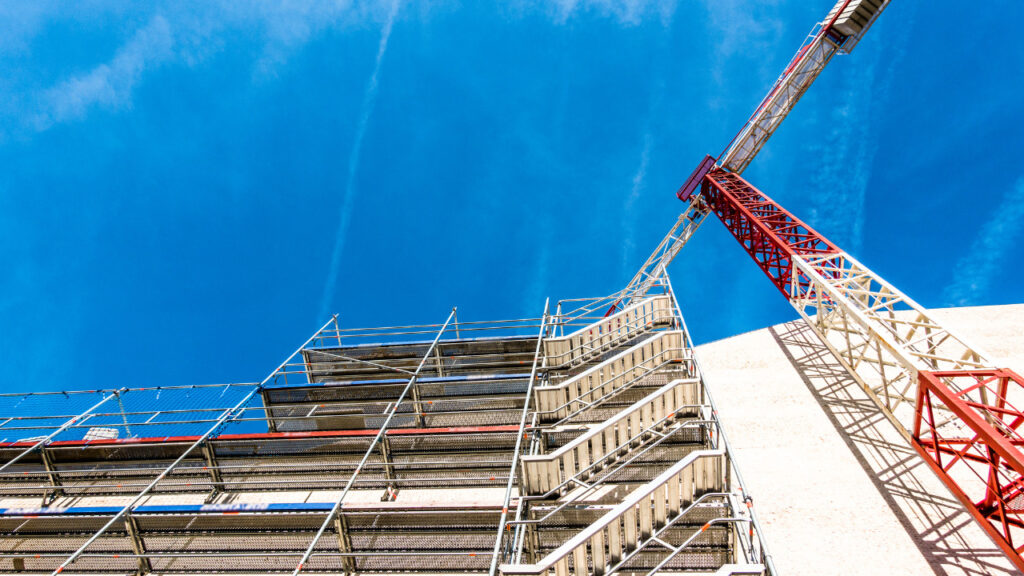
Mast Climber Scaffolding
A mast climber scaffold is ideal if your load is heavy.
A sizable platform that is powered by electricity travels up and down a vertical structure that resembles a ship’s mast and is fixed to the earth. Two masts can be used for larger platforms.
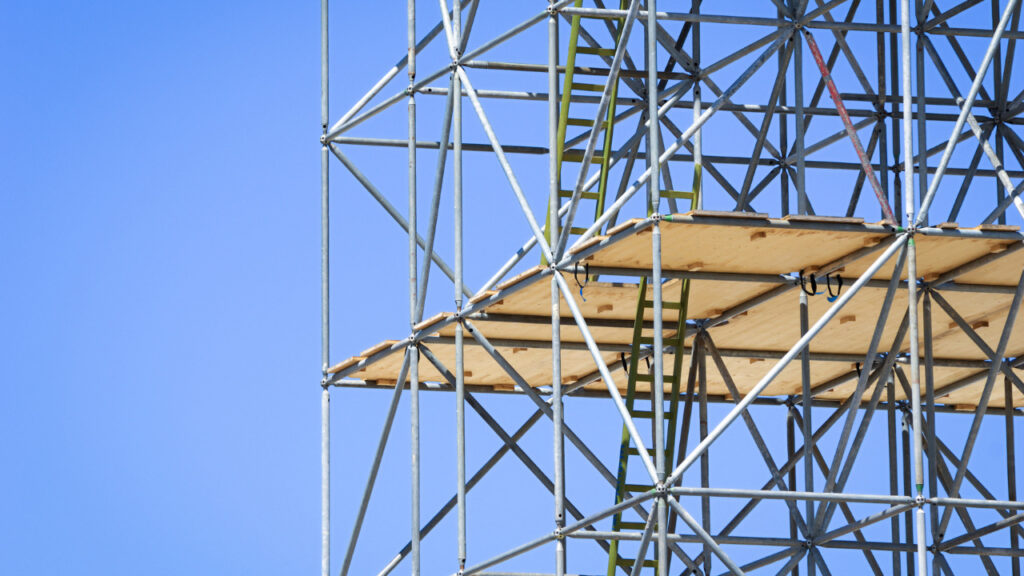
Mobile (Manual or Propelled) Scaffolding
It is the only type of mobile scaffolding that can be moved horizontally rather than vertically.
Guardrails and ledgers link the four standards, and a platform sits roughly midway up the standards. Every standard has a locked wheel; to avoid accidents, the scaffold should only be used when the wheels are locked.
The scaffolding may be powered by a motor to be moved from the platform or it may be manually moved from the ground.
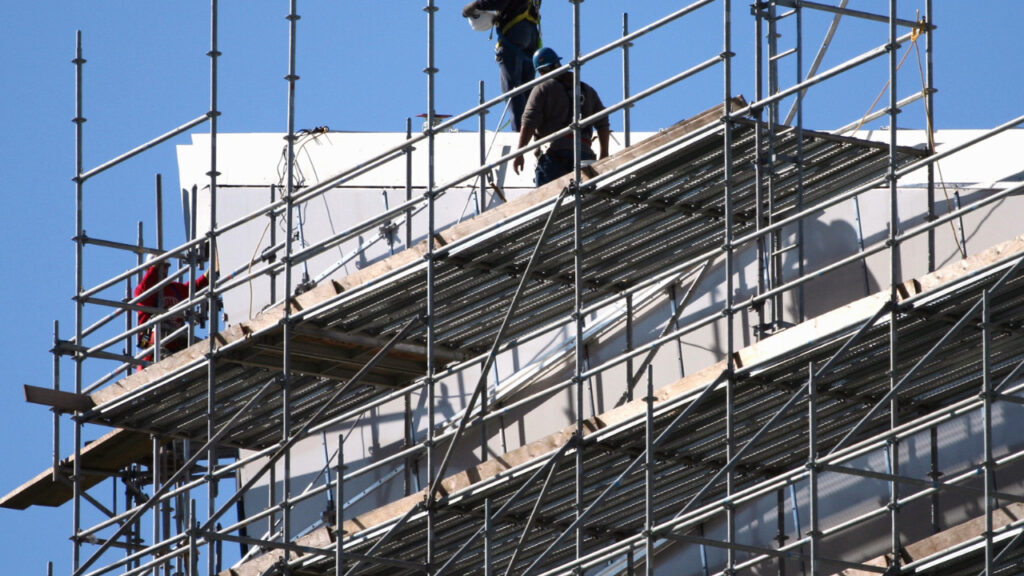
Pole/Wood Pole Scaffolding
Any scaffolding design that uses wood for every structural element is referred to as pole scaffolding.
Pole scaffolding has been replaced by steel scaffolding, which is stronger, safer, and reusable, the exception being bamboo scaffolding, which is primarily used in Asia.
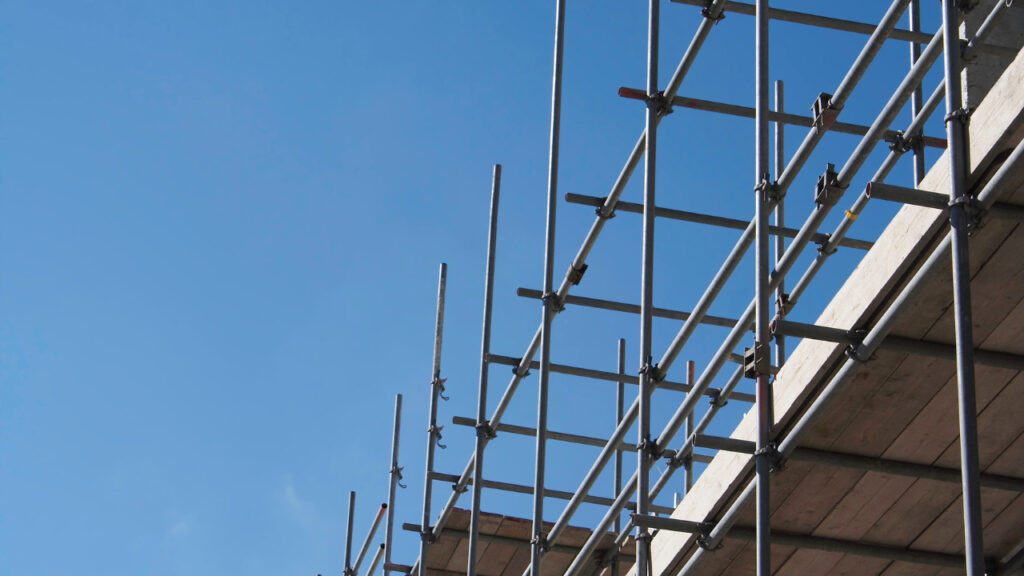
Trestle Scaffolding
Step ladders or tripods can be used to create trestle scaffolding by providing support for a platform in place of standards.
Tressel scaffolding is limited to one level, in contrast to other supported scaffolds.
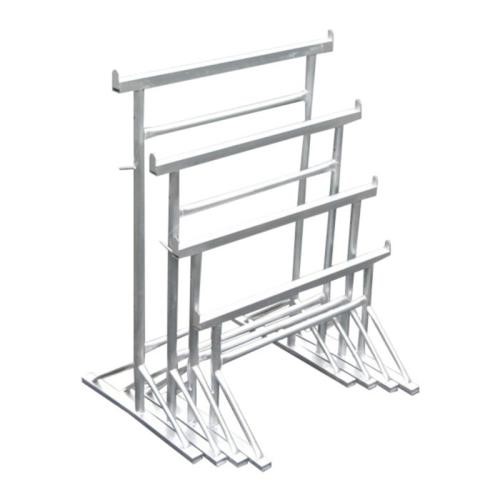
Tube and Coupler Scaffolding
Known by other names like systems scaffolding or patented scaffolding, tube, and coupler scaffolding is made up of several prefabricated parts that are fastened together with couplers.

2 Types of Scaffolding Alternatives
You can consider these scaffolding options if you need to increase your height but are hesitant to use scaffolding or lack the space for it:
Scissor Lifts
It is one of the types of mobile scaffolding that consists of a motorized base on wheels and a platform that moves vertically on a series of crossbeams shaped like scissors.
While some scissor lifts can be operated from the raised platform, others can only be operated from the lowered platform. The person on the scaffold can usually control the platform’s location without the assistance of another person because the controls to raise it are typically located on the platform itself.
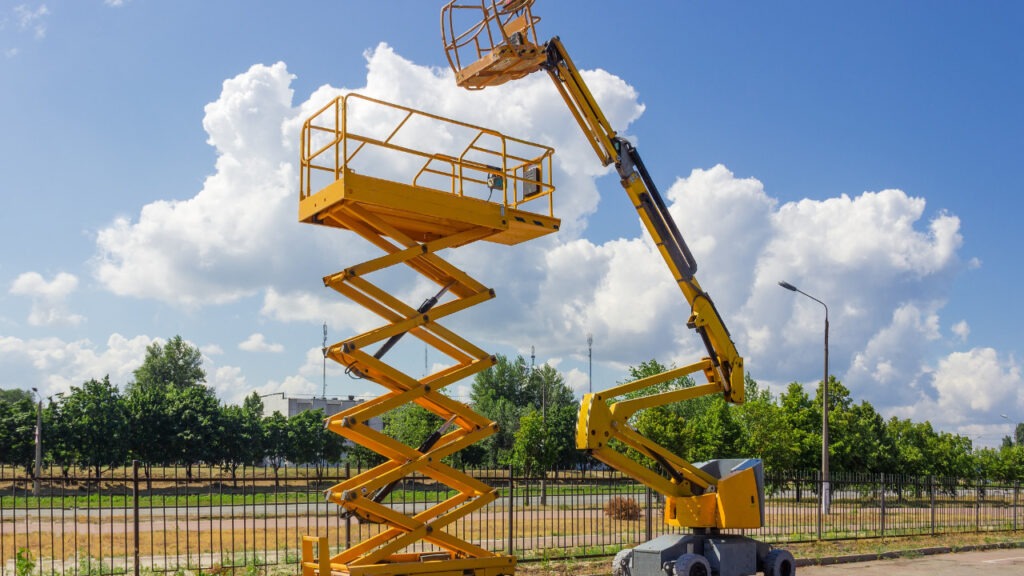
Aerial Lifts
Any lift type that does not make use of the scissors beam structure is considered an aerial lift, and they are also supported by scaffolding.
They go by several names, including bucket, boom, tower, and vertical lifts. They are mobile, much like scissor lifts, and one person can operate them because the control panel is located on the platform.
It is crucial to remember that scissor lifts and aerial lifts have unique safety regulations that you must adhere to at all times.
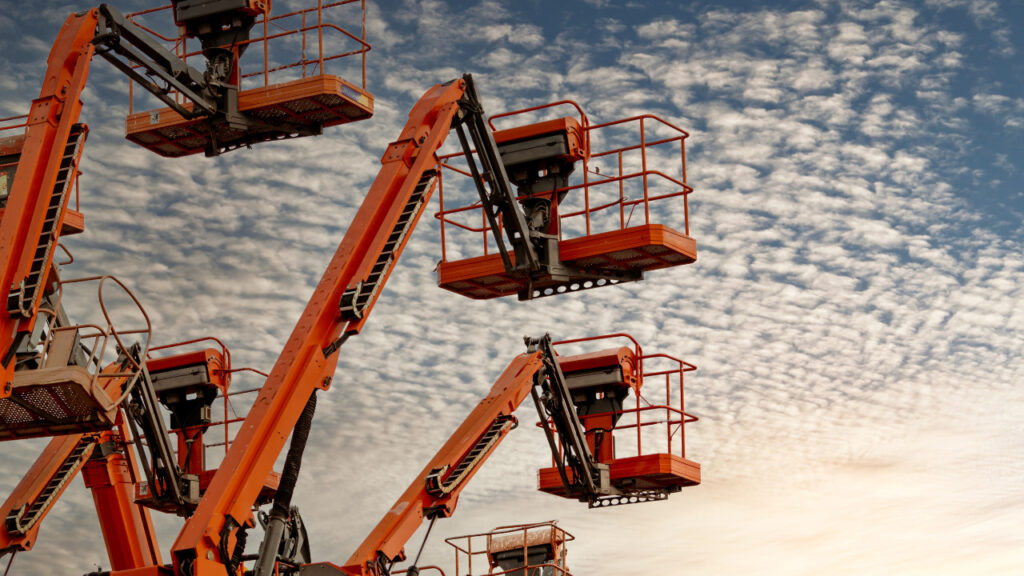
Final Thoughts!
Scaffolding is an essential component of building construction that has been used in some form for as long as humans have been constructing taller structures.
Steel scaffolding has largely replaced wood scaffolding over time, and some tasks that once required scaffolding can now be finished with aerial lifts or scissors.
Scaffolding will undoubtedly continue to change as long as people want to construct tall buildings.

